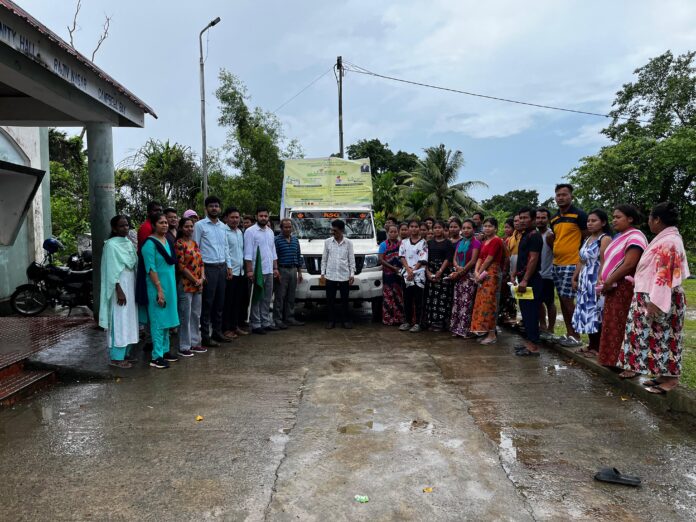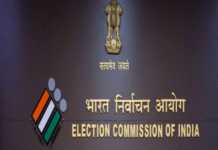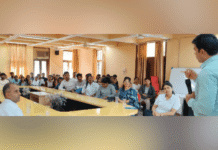Car Nicobar’s Community Hall at Perka throbbed with drumbeats, oil lamps, and the smell of freshly tilled soil on 29 May as the Viksit Krishi Sankalp Abhiyan 2025 opened its island chapter. While a cyclist couriered last-minute invitation cards to Big Lapathy, sister launch events revved across Campbell Bay and Nancowry, turning an archipelago into a single live classroom for pre-kharif preparedness.
The nationwide drive aims to fuse science with century-old sowing rhythms. On Thursday, more than 150 farmers, self-help group volunteers, and students formed orderly queues to register, many punching thumbprints on tablets that instantly uploaded demographics to the campaign’s cloud dashboard. Organisers, Krishi Vigyan Kendra-CIARI, Fisheries, Agriculture, and Veterinary departments, wanted data as much as deference; analytics will later steer fertiliser allocations and training rosters.
Senior scientist and KVK head Santosh Kumar set the tone in a crisp welcome: climate vagaries, he warned, are tightening planting windows and testing varietal resilience. If Nicobar’s growers hesitate to tweak nutrient maps or diversify livestock feed, yields may stagnate even as input prices soar. Listeners nodded, wary of 2023’s unseasonal squall that flattened banana groves.
The rhetorical baton passed to tribal council chairman Lionald Nicomed, whose oratory fused cultural pride with pragmatic caution. The archipelago’s unique geography, he said, demands that policy percolate into every coconut plantation and piggery, otherwise flagship schemes remain a Delhi headline. His call for inclusive participation drew applause, especially from women who handle seed saving and backyard poultry.
Deputy Commissioner Amit Kale punctuated the formality with a road-ready metaphor. “The Rath Yatra under Viksit Krishi Sankalp Abhiyan is not merely a campaign, it’s a commitment to our farmers,” he declared, gesturing toward the festooned flatbed truck set to tour hamlets. “By bringing information, inputs, and innovation to the grassroots, we are bridging the gap between policy and practice. I urge every farmer to actively engage in this journey toward self-reliance and prosperity.” The quote, amplified by a public-address stack, became the afternoon’s sonic signature.
Once speeches wrapped, organisers shifted to distribution mode. Soil-health cards slid across desks, fishery licences changed hands, and laminated identity tags clipped onto kurta pockets. A cardboard box of one-day-old chicks chirped near feed sacks labeled with mineral supplement charts. Vegetable seed packets flashed hybrids bred for saline tolerance, vital for coastal plots that taste spray on a windy day.
Veterinary officers used the bustle to promote deworming drives, while fisheries staff signed up skippers for GPS mesh tracking. The Rath Yatra’s flag-off turned ceremonial policy into kinetic ambition: Kale waved the green scarf, engines fired, and the truck rolled out, carrying extension officers, pamphlets, and live demonstration units meant to leapfrog physical remoteness.
Though the campaign’s immediate deliverables seem tangible, equipment, credentials, and nutrient sachets, the longer arc targets behaviour. Organisers will revisit villages throughout the monsoon to audit adoption. Data scientists at CIARI headquarters in Sri Vijaya Puram plan to overlay uptake metrics onto satellite imagery, isolating pockets where message diffusion slows.
What anchors the initiative is a promise of unified service. Historically, farmers here navigate a mosaic of desks: one for poultry feed, another for soil testing, a third for micro-credit. The 2025 rollout bundles agencies under a single tent, reducing bureaucratic friction. If the pilot thrives, Nicobar could prototype a national one-stop rural service cube.
Logistics posed obstacles. Inter-island ferries run on the weather’s mercy, and transporting fragile chicks or temperature-sensitive feed concentrates demands cold-chain improvisation. KVK Nicobar repurposed fisheries iceboxes, a small example of the resourcefulness that campaign coordinators hope farmers will mirror when tweaking drip lines or compost pits.
Parallel launches at Campbell Bay and Nancowry echoed Car Nicobar’s template, transmitting the same message: adaptation cannot be postponed. In Campbell Bay, extension staff set up pop-up soil labs near a makeshift hangar; in Nancowry, a drone demonstration mapped terrace gradients. All three zones report to CIARI director Eaknath Chakurkar, whose oversight ensures island-specific research flavours every advisory rather than recycling mainland bulletins.
The day ended with a modest meal of coconut rice and fish curry, fitting symbolism for agriculture’s tie-up with fisheries, served on leaf plates that compost back into the soil, campaigners seek to revamp. As twilight draped Perka, farmers toted their satchels of seed and paperwork, some lingering to click selfies beside the Rath Yatra vehicle before returning to paddies freshly harrowed for the kharif countdown.
For Car Nicobar’s agrarian mosaic, the launch felt less like a clanging ceremony and more like a door cracked open. Over the next four months, that door will either swing wide on hinges of adoption or creak shut if enthusiasm fizzles. Organisers claim the difference will lie in follow-up, peer-to-peer mentoring, and a public scoreboard tracking germination, chick survival, and feed conversion. The Rath Yatra may have rolled out of sight, but dashboard alerts on mobile screens will keep its momentum rumbling all the way to harvest.





